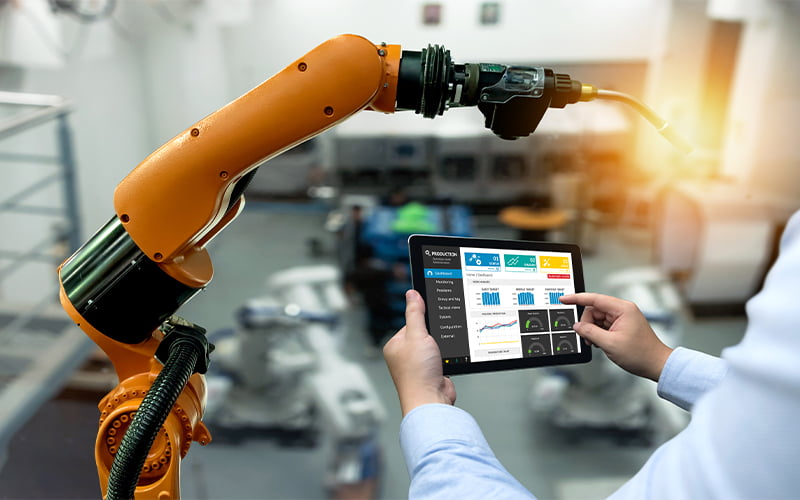In today’s fast-paced business environment, organizations are continuously seeking ways to streamline operations, reduce costs, and enhance efficiency. One area that has undergone significant transformation is procurement, where the adoption of business process automation has revolutionized the way companies acquire goods and services. By leveraging advanced technologies, procurement teams are redefining their processes, driving greater value, and positioning themselves as strategic partners within their organizations.
The procurement process encompasses a range of activities, from identifying and sourcing suppliers to negotiating contracts, managing spend, and ensuring compliance. Traditionally, these tasks were heavily reliant on manual processes, paper-based documentation, and time-consuming approvals. However, the emergence of automation has introduced a paradigm shift, empowering procurement teams to overcome challenges and unlock new opportunities for growth and optimization.
- Streamlined and Efficient Processes One of the most significant benefits of automation in procurement is the streamlining of processes. By automating repetitive and mundane tasks, such as data entry, document management, and approval workflows, organizations can significantly reduce the time and effort required for routine activities. This not only improves efficiency but also frees up valuable resources that can be redirected toward more strategic and value-added initiatives.
- Enhanced Visibility and Control Procurement teams often struggle with a lack of visibility and control over their processes, leading to inefficiencies and potential compliance issues. Automation solutions provide real-time visibility into the entire procurement lifecycle, allowing organizations to track spending, monitor supplier performance, and ensure adherence to established policies and regulations. This level of transparency empowers procurement professionals to make informed decisions, mitigate risks, and drive continuous improvement.
- Data-Driven Decision-Making Effective procurement requires access to accurate and timely data to inform strategic decisions. Automation solutions leverage advanced analytics and reporting capabilities, enabling procurement teams to gain valuable insights from their data. By analyzing spending patterns, supplier performance metrics, and market trends, organizations can optimize their procurement strategies, negotiate better deals, and identify opportunities for cost savings.
- Improved Supplier Collaboration and Engagement Collaboration with suppliers is a critical component of successful procurement operations. Automation technologies facilitate seamless communication and information sharing between organizations and their suppliers. This includes features such as electronic bidding platforms, contract management systems, and supplier portals, which enable efficient exchange of data, streamlined negotiations, and real-time updates on orders and deliveries.
- Increased Compliance and Risk Mitigation Procurement processes are subject to a wide range of regulatory requirements and organizational policies. Manual processes can introduce the risk of non-compliance, potentially leading to financial penalties and reputational damage. Automation solutions help mitigate these risks by embedding compliance checks and controls directly into the procurement workflows, ensuring that all activities adhere to established rules and regulations.
Implementing business process automation in procurement is not a one-size-fits-all solution. Each organization has unique requirements, processes, and challenges that must be carefully evaluated and addressed. A successful implementation typically involves the following steps:
- Process Mapping and Analysis The first step is to thoroughly map and analyze the existing procurement processes within the organization. This involves documenting each step, identifying bottlenecks, and understanding the specific requirements and pain points. This analysis serves as the foundation for designing an effective automation solution.
- Solution Selection and Implementation Based on the process analysis, organizations should evaluate and select the most suitable procurement automation solution that aligns with their specific needs and requirements. This may involve evaluating various vendors, and considering factors such as functionality, scalability, and integration capabilities. Once the solution is selected, a well-planned implementation strategy is crucial to ensure a smooth transition and minimize disruptions.
- Integration and Data Migration Procurement automation solutions often need to integrate with other existing systems and applications, such as enterprise resource planning (ERP), customer relationship management (CRM), and financial systems. Ensuring seamless integration and data migration is essential for achieving end-to-end process automation and ensuring data integrity.
- User Training and Change Management Effective user training and change management strategies are critical for the successful adoption and maximization of the automation solution’s benefits. Procurement teams should receive comprehensive training on the new processes and technologies, while change management initiatives should address any resistance and foster a culture of continuous improvement.
- Continuous Monitoring and Optimization Automation is not a one-time implementation; it requires ongoing monitoring and optimization. Organizations should regularly review and analyze performance metrics, identify areas for improvement, and make necessary adjustments to ensure that the automated processes remain efficient and aligned with evolving business needs.
As organizations embrace business process automation in procurement, they are poised to unlock a range of benefits that extend beyond operational efficiencies. By leveraging automation, procurement teams can position themselves as strategic partners within their organizations, contributing to overall business growth, cost optimization, and competitive advantage.
In conclusion, the procurement landscape is undergoing a transformative shift, driven by the adoption of automation technologies. By streamlining processes, enhancing visibility, enabling data-driven decision-making, fostering supplier collaboration, and mitigating risks, organizations can redefine their procurement operations and unlock new levels of value. As automation continues to evolve, procurement professionals who embrace this paradigm shift will be well-positioned to drive success and achieve a competitive edge in an increasingly dynamic business environment.
